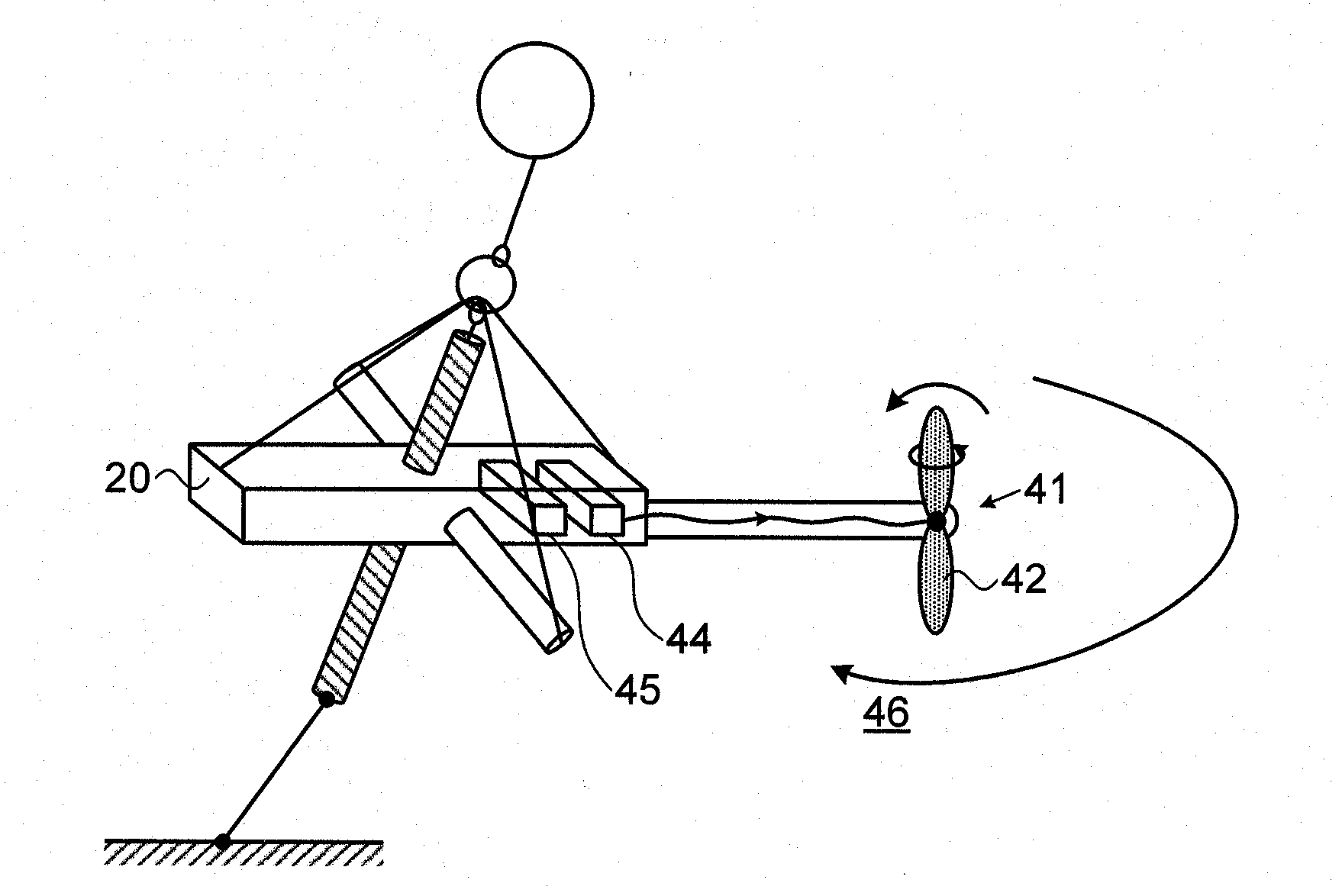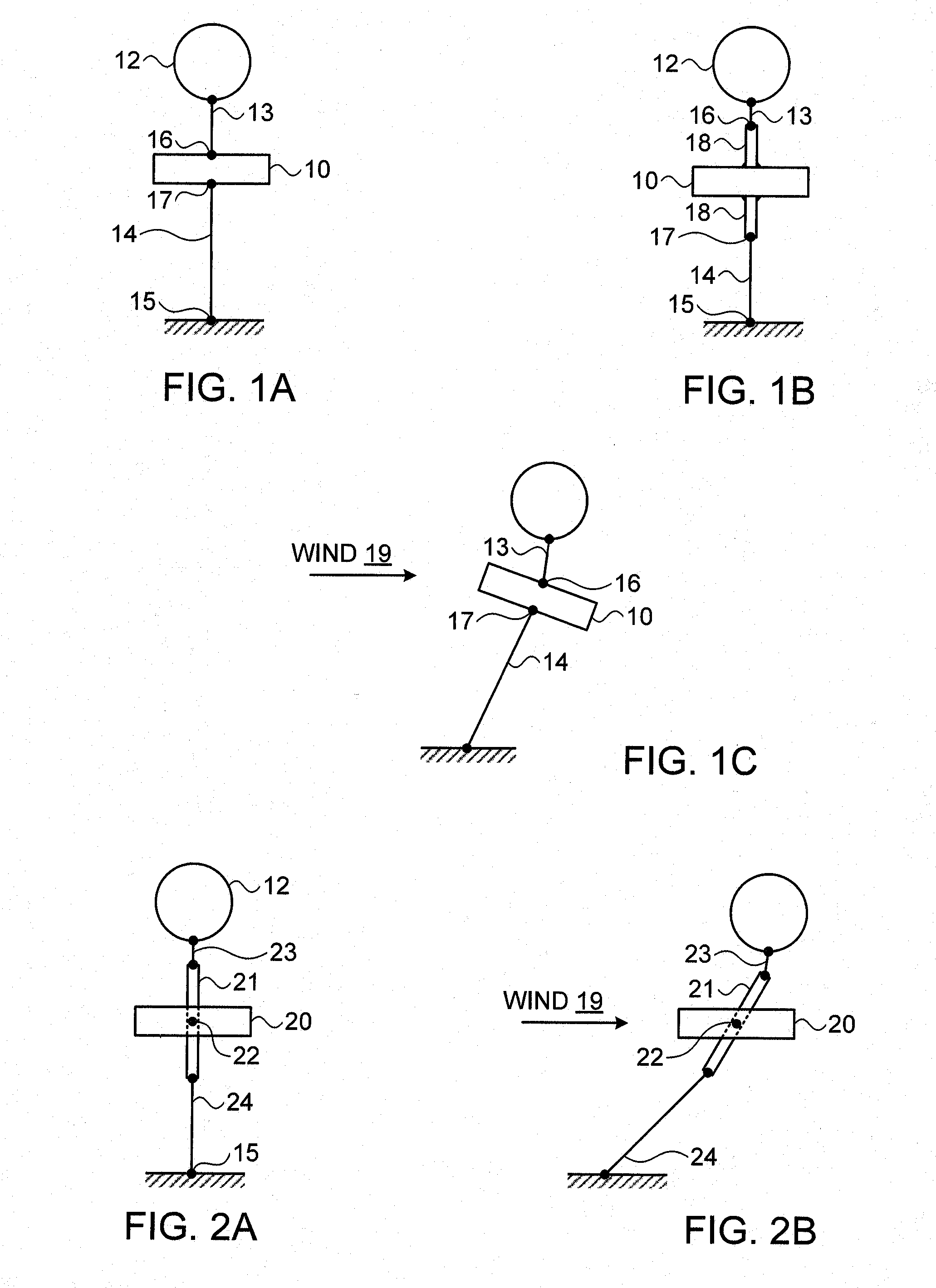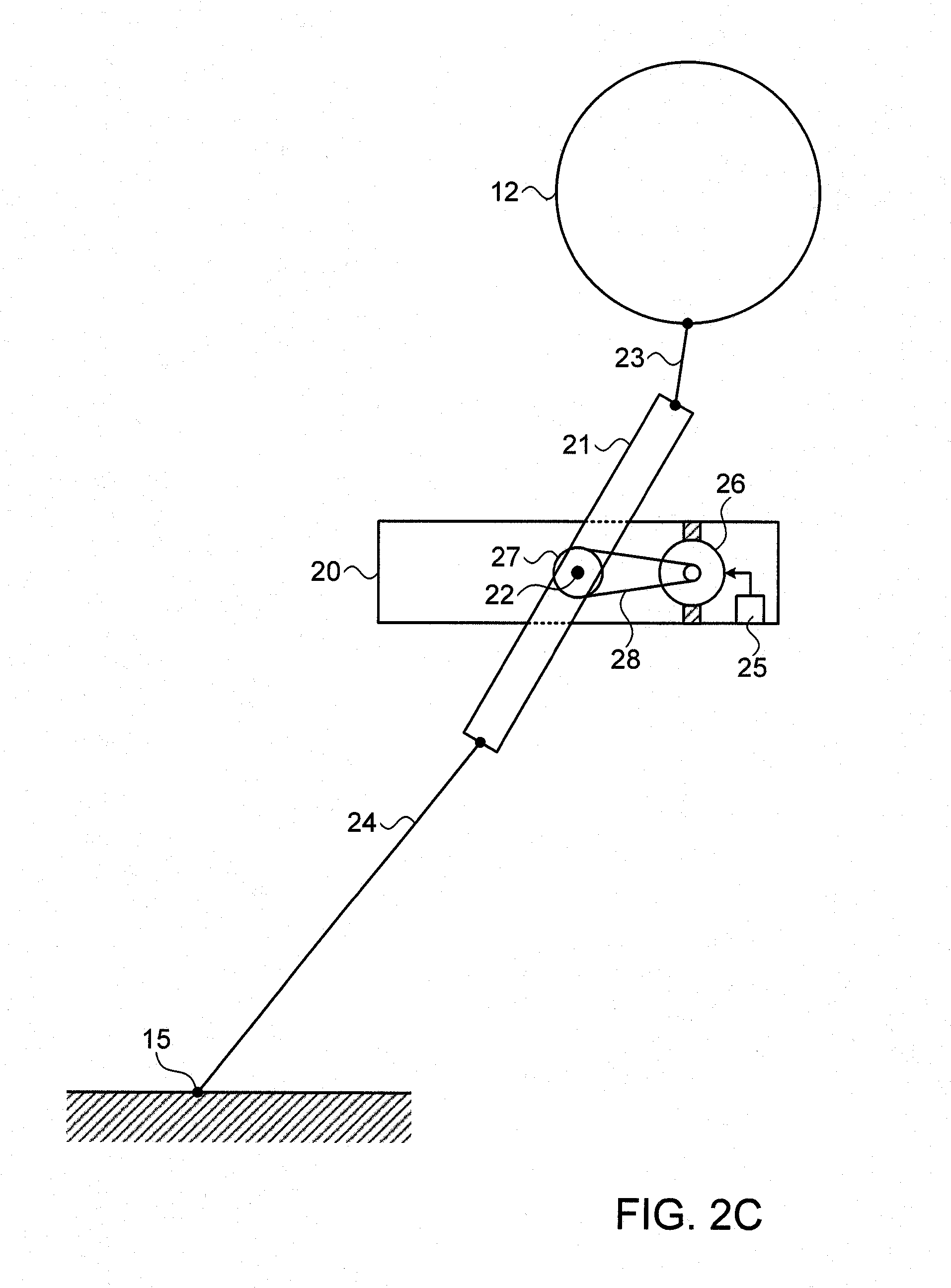Balloon-borne platform stabilization
a technology for airborne platforms and stabilizers, which is applied to balloon aircrafts, light-than-air aircraft, aircrafts, etc., can solve the problems of affecting the stability of the payload by a number of cords is not easy, and the effect of wind buffeting on the payload is reduced, and the platform is less perturbed
- Summary
- Abstract
- Description
- Claims
- Application Information
AI Technical Summary
Benefits of technology
Problems solved by technology
Method used
Image
Examples
Embodiment Construction
[0069]Reference is now made to FIGS. 1A to 1C, which illustrate schematically a balloon borne payload platform 10 connected according to the novel methods described in this disclosure. The payload platform is attached to the balloon 12 by means of a cord 13 attached to a connection point 16 located at the top end of the platform, while the anchor wire 14 is attached to a connection point 17 located at the lower end of the platform. The two connection points are preferably disposed opposite each other, such that when the platform is horizontal, a line drawn between the connection points is vertical. In FIG. 1A, the balloon is shown in a situation where there is no wind, and the cable rises vertically from the anchor point on the ground or on a ship or other vehicle, via the payload platform to the balloon.
[0070]FIG. 1B shows an alternative method of providing the attachment points to the payload platform 10, at either end of a solid strut 18 extending upwards and downwards from the p...
PUM
 Login to View More
Login to View More Abstract
Description
Claims
Application Information
 Login to View More
Login to View More - R&D
- Intellectual Property
- Life Sciences
- Materials
- Tech Scout
- Unparalleled Data Quality
- Higher Quality Content
- 60% Fewer Hallucinations
Browse by: Latest US Patents, China's latest patents, Technical Efficacy Thesaurus, Application Domain, Technology Topic, Popular Technical Reports.
© 2025 PatSnap. All rights reserved.Legal|Privacy policy|Modern Slavery Act Transparency Statement|Sitemap|About US| Contact US: help@patsnap.com



